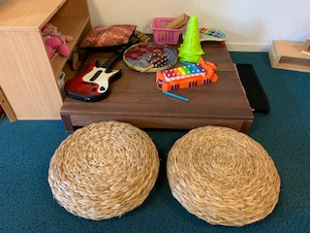What makes a successful learning environment?
- marketingmafia
- May 11, 2023
- 3 min read
– As a parent you could be a vital tool to create your own learning environment at home.
“A rich and varied environment supports children’s learning and development. It gives them the confidence to explore and learn in a secure and safe, yet challenging, indoor and outdoor space.”
Play is a very significant component of a child’s learning experience and is a foundation for their growth and development. Creating and providing children with an environment that supports their health, safety and thinking is extremely important for their overall learning experience and growth.
Why is the physical environment in childcare important for learning and play? A well-arranged environment should enhance children’s development through learning and play. One of the most common ways children learn is through play - therefore their surrounding environments need to be designed and configured in alignment with the way they feel, act, and behave. A positive physical environment allows children to grow and develop through activities, colours and textures.
The physical learning environment in early childhood is a clear depiction of the child’s learning. An organised and comfortable space is one that will allow children to develop socially, emotionally, and physically.
To understand the importance of play, it is firstly important to understand the importance of the environment. The physical environment will also differ, depending on the age of the child. Make sure that your environments are designed for the following stages of play:
Unoccupied Play (Birth-3 Months)
At this stage, your baby is just making a lot of movements with their arms, legs, hands, feet, etc. They are learning about and discovering how their body moves.
Solitary Play (Birth-2 Years)
This is the stage when children start to play alone. They are not interested in playing with others quite yet. This can also be the spectator / onlooker Behaviour – where during this stage children begin to watch other children play.
Parallel Play (2+ Years)
When a child plays alongside or near others but does not play with them it can be referred to as parallel play.
Associate Play (3-4 Years)
When a child starts to interact with others during play. A child might be doing an activity related to the children around him but might not actually be interacting with another child. For example, children might all be playing on the same piece of playground equipment but all doing different things like climbing, swinging, etc.
Cooperative Play (4+ Years)
When a child plays together with others and has interest in both the activity and other children involved in playing, they are participating in cooperative play.
Features of a good learning environment in early childhood
Learning environments should be a positive and welcoming space where children feel comfortable to participate, explore and grow. However, there are features that successful learning environments provide. These includes:
· Spaces to enable quality interactions with children.
· Areas for exploration and investigation.
· Group spaces and areas for children to explore creativity.
· Spaces for relaxation.
· Zones for rough and tumble play.
· Welcoming spaces for families.
· Opportunity for risk-taking and challenge.
It is also crucial that these areas have adequate resources and materials that reflect children’s needs, lives, and identity.
A key part of building a positive early learning environment is providing children with the co-regulation they need. The following are guidelines in creating these positive learning environments for your child:
Create an environment of "yes" for your child that buffers them from environmental stressors. Establish predictable routines, transition strategies, and behavioural expectations appropriate to their development. You can also create a "cosy corner" where your child can go if they are feeling overwhelmed.
Offer your child an intentionally planned learning experiences to help them practice self-regulation skills. For example, you can plan fun activities to help children as young as 18 months learn to name their own feelings, recognize others' feelings, and self-soothe in moments of distress. Model these skills yourself and point out when you see other children and adults using them, too.
You as a parent are the most important part of the early learning environment. Offering your child calm, nurturing, and predictable social and emotional environments, and promoting their self-regulation skills, helps them feel safe and secure so they can learn, play, and grow.
The following photos are some of the great environments we currently have around at our Skippy’s Centres.
**Sources:
Pathways.org. How kids learn to Play. https://pathways.org/kids-learn-play-6-stages-play-development/
Young Academics. What makes a successful learning environment for childcare. https://www.youngacademics.com.au/blog/what-makes-a-successful-learning-environment-in-childcare/
















